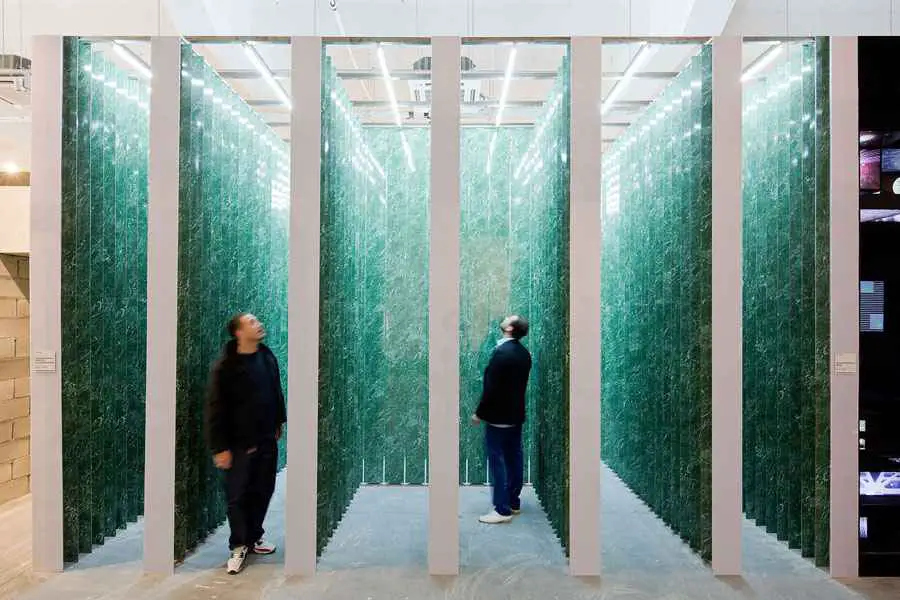Shenzhen Hong Kong Biennale, Project, News, Design, SZHK Event, Building
Shenzhen & Hong Kong Biennale, China
SZHK Installation – 2011 / 12
Photos + Films
23 Dec 2011
2011 Shenzhen & Hong Kong Bi-City Biennale of UrbanismArchitecture
Installation images + opening ceremony photos + videos from the 2011 Shenzhen & Hong Kong Bi-City Biennale of UrbanismArchitecture:
SZHK Biennale Installations
The Street – ‘Tri-Colonnade’ by SO-IL:
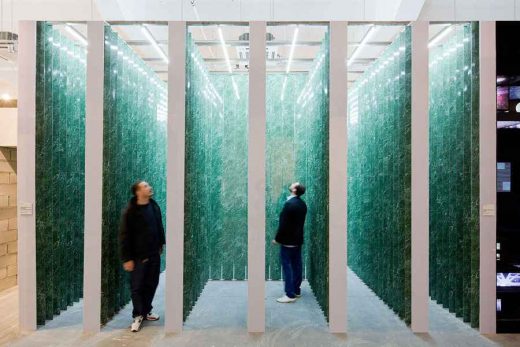
photo by Iwan Baan, courtesy of SO-IL and the 2011 Shenzhen & Hong Kong Bi-City Biennale of UrbanismArchitecture
The Street – ‘Boundless’, by MAD Architecture, 2011:
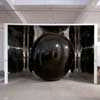
photo courtesy of MAD Architecture and the 2011 Shenzhen & Hong Kong Bi-City Biennale of UrbanismArchitecture
The Street – ‘Interior Façade’, by JohnstonMarkLee, 2011:
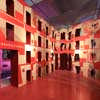
image courtesy of JohnstonMarkLee and the 2011 Shenzhen & Hong Kong Bi-City Biennale of UrbanismArchitecture
‘Boom! Shenzhen’ by Mary Anne O’Donnell, 2011:
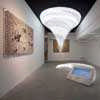
photo by Mr. Chen Yao courtesy of the Shenzhen & Hong Kong Biennale of UrbanismArchitecture
Ultralight Village – ‘Oxymoron Pavilion’, by OBRA, 2011:
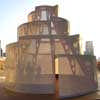
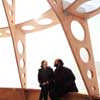
photos courtesy of OBRA and the 2011 Shenzhen & Hong Kong Bi-City Biennale of UrbanismArchitecture
Ultralight Village – ‘Gizmo’ by Studio Up:
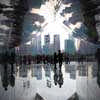
photo courtesy of Studio Up and the 2011 Shenzhen & Hong Kong Bi-City Biennale of UrbanismArchitecture
SZHK Biennale – Opening Ceremony
SZHK Biennale – Opening Ceremony:
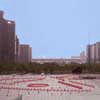
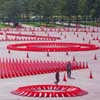
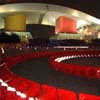
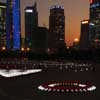
photos courtesy of the 2011 Shenzhen & Hong Kong Bi-City Biennale of UrbanismArchitecture
SZHK Biennale – Videos
Film project featured in the SZHK Biennale – ‘And then it became a city’ – documenting everyday life in six planned cities under the age of sixty:
Shenzhen, China, 1979
‘A Circle is Drawn, A City is Born, ShenZhen’, Wang Gongxin, 2011:
Shenzhen, China, Film on YouTube
Gaborone, Botswana, 1964
‘When a Village Grows Up’, Miki Redelinghuys, 2011:
Gaborone, Botswana, Film on YouTube
Chandigarh, India, 1953
‘Tracing Bylanes’, Surabhi Sharma, 2011:
Chandigarh, India, Film on YouTube
Las Vegas, U.S.A., 1960
Las Vegas Portrait, Sam Green, 2011:
Las Vegas, USA, Film on YouTube
Almere, The Netherlands, 1976
‘Creating Almere’, Astrid Bussink, 2011:
Almere, The Netherlands, Film on YouTube
12 Dec 2011
Shenzhen Hong Kong Biennale – News
Shenzhen – Hong Kong Biennale, China
Opening of Shenzhen – Hong Kong Biennale for Urbanism and Architecture
The Street – Façade of Countenance by J. MAYER H.
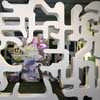
image from J. MAYER H.
Shenzhen Hong Kong Biennale : J. MAYER H.
27 Oct 2011
2011 Shenzhen & Hong Kong Bi-City Biennale of UrbanismArchitecture Announces Exhibition Program
Exhibition title : Shenzhen Builds
Fuksas, Shenzhen Bao’an International Airport, Terminal 3, courtesy of Massimiliano + Doriana Fuksas Architects:
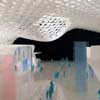
picture : 2011 Shenzhen & Hong Kong Bi-City Biennale of UrbanismArchitecture
Exhibition title : The Street
J. Mayer H., Facades of Contenance:
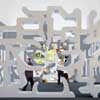
picture : 2011 Shenzhen & Hong Kong Bi-City Biennale of UrbanismArchitecture
JohnstonMarkLee, Interior Façade:
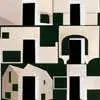
picture : 2011 Shenzhen & Hong Kong Bi-City Biennale of UrbanismArchitecture
Exhibition title : Ultra-Light Village
Clavel Arquitectos, The Centerfugal Village:
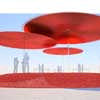
picture : 2011 Shenzhen & Hong Kong Bi-City Biennale of UrbanismArchitecture
OBRA, Oxymoron Pavilion:
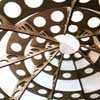
picture : 2011 Shenzhen & Hong Kong Bi-City Biennale of UrbanismArchitecture
Wei Chun Yu:
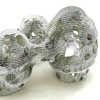
picture : 2011 Shenzhen & Hong Kong Bi-City Biennale of UrbanismArchitecture
Wei Chun Yu:
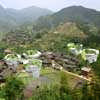
picture : 2011 Shenzhen & Hong Kong Bi-City Biennale of UrbanismArchitecture
Exhibition title : The Favela Painting Project
Haas&Hahn, Praca Cantao (detail), 2010:
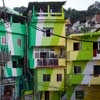
picture : 2011 Shenzhen & Hong Kong Bi-City Biennale of UrbanismArchitecture
Exhibition title : SZ Invitational
Gimme Shelter!, Chile Pavilion, Sebastián Irrázaval + Hugo Mondragón, curators:
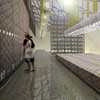
picture : 2011 Shenzhen & Hong Kong Bi-City Biennale of UrbanismArchitecture
13 Oct 2011
SZHK Biennale 2011
2011 SHENZHEN & HONG KONG BI‐CITY BIENNALE OF URBANISMARCHITECTURE ANNOUNCES EXHIBITION PROGRAM
EXHIBITION DATES: DECEMBER 11, 2011 – FEBRUARY 10, 2012 VERNISSAGE: DECEMBER 7-10, 2011 CHIEF CURATOR: TERENCE RILEY
Shenzhen, China, October 12, 2011– The Organizing Committee of the Shenzhen & Hong Kong Bi‐City Biennale Of UrbanismArchitecture announced the program for the fourth edition of the Biennale, organized by the Chief Curator of the 2011 Biennale Terence Riley. Selected from an international call for proposals, Mr. Riley is the first non-Chinese curator for the Shenzhen & Hong Kong Bi-City Biennale Of UrbanismArchitecture.
Riley is an architect and partner in the architectural firm K/R, and the former director of Miami Art Museum. As the Philip Johnson Chief Curator of Architecture and Design at the Museum of Modern Art New York, he played a key role in overseeing MoMA’s 2004 expansion project.
SZHK Biennale Installation by Ball Nogues Studio:
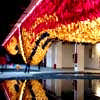
photo : Benjamin Ball
“Architecture Creates Cities, Cities Create Architecture” is the title of the 2011 Shenzhen & Hong Kong Bi-City Biennale of UrbanismArchitecture. The Biennale will portray the endless interaction between architecture and cities, and provoke an in‐depth discussion on sustainability and urban vitality. The Biennale will juxtapose that interplay as experienced in Shenzhen and other cities in China with that of other cities around the world in its exhibitions, publications, collateral events and, even, in its logo. Designed for the Biennale by wx‐design, the logo graphically interprets the theme by stringing two sentences together in the form of a Mobius strip.
“The curatorial program for the 2011 Biennale expands the concepts established in the previous three editions, highlighting the significance of Urbanism/Architecture on a broader international and contemporary scale” said Feng Yueqiang, an architect from the Biennale Academic Committee.
Riley’s program includes more than 30 exhibitions, symposiums, panel discussions and performances. He has appointed a number of scholars, architects and artists as members of the curatorial team, including Jeffrey Johnson (Director of China Lab, Columbia University), Dr. Tang Keyang (Curator of China Pavilion, 12th Venice Architectural Biennale), Xiangning Li (Professor of Theory and Criticism, Tongji University), Qingyun Ma (Dean of the School of Architecture, University of Southern California), Dr. Mary Ann O’Donnell (Research Associate, College of Arts, Shenzhen University), Jonathan Solomon (Acting Head of the Department of Architecture, Hong Kong University), Rochelle Steiner (Dean & Professor, Roski School of Fine Arts, University of Southern California) and David van der Leer (Assistant Curator of Architecture and Urban Studies, Guggenheim Museum), among others.
SZHK Biennale Installation 2009 Bug Dome by WEAK!
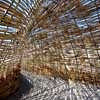
photo © Marco Casagrande
The featured exhibitions in the program strive to express a global experience and dialogue. For example, 6 Under 60 is a multimedia project that retrospectively investigates the successes and failures of six new cities, including Shenzhen, China; Las Vegas, USA; Almere, The Netherlands, Gaborone, Botswana; Brasilia, Brazil; and Chandigarh, India. The exhibition will also feature new videography tracing their ongoing evolution from master plans to actual cities.
Additionally, Shenzhen Builds will exhibit 5 major urban projects designed by leading architects from China and abroad currently or soon to be under construction in Shenzhen. It will reveal their design processes and the projects’ impact on the surrounding environment, architecture and urban development. Counterpart Cities selects 6 groups from Shenzhen and Hong Kong respectively, to interrogate their common ecological and environmental issues and propose solutions. Other exhibitions such as 8 Urban Plans For China, Informal China, Urban China Timeline and Boom! Shenzhen provide in-depth studies on urbanization at the regional and city level in China.
The biennale will also provide a venue for young architects, artists and designers. The Street will invite an international roster of 12 architects in their 30’s and 40’s to design 12 facades in their own architectural language, as well as an installation of their work. Together, the twelve facades will create a street-like environment, literally reflecting the theme of the Biennale. Ultra Lightweight Village highlights the work of a selection of younger, international architects by utilizing Shenzhen’s Civic Square.
The 2009 Biennale reconnected the square with urban life and activities through experimental interventions. Ultra Lightweight Village will continue to do so by erecting six structures designed by six leading contemporary architects from around the world along the connecting axis of the main plaza and the Lianhua Mountain Park to the north, passing through the Government Center. These projects will bring a different scale to the Biennale and help invigorate the area both during the day and at night. Also, New York architects John Bennett and Gustavo Bonevardi will create a series of installations that will function as platforms for performances during the vernissage, further activating the space.
The 2011 Biennale will also include the concept of International Pavilions that was initially proposed by Mr. Antonius Lambertus Maria Van Zeeland, the Consul-General of the Netherlands Consulate in Guangzhou. Featured in this section of the biennale will be an award-winning project from the 2010 Venice Biennale of Architecture. Reclaim, the Bahrain Pavilion, which was awarded Best National Participation, consists of three fishing platforms – the informal waterfront structures that used to line the sea and served as lively social spaces before the real estate boom of recent decades reconfigured the city’s shore.
It echoes Shenzhen’s experience of being developed from a small fishing village to an international modern city. In an effort to not only internationalize the Shenzhen Biennale, but also to expand the number of multiple internationally voices heard, various national institutes were invited to participate, including: Austria, Chile, Egypt, Finland, and The Netherlands.
Catalyzing change is also the subject of two projects in the 2011 Biennale. The Ghana ThinkTank is a worldwide network of think tanks creating strategies to resolve local problems in the “developed” world. These think tanks analyze “First” World problems and propose solutions, which are put into action back in the community where the problems originated. Similarly, Haas + Hahn, Dutch artists Dre Urhahn and Jeroen Koolhaas, turn public urban spaces that are deprived and often sites of conflicts, into inspiring artworks of monumental size. These projects offer local youth education and job opportunities, while making their community a nicer place to live.
As a city that recently celebrated its 30th anniversary, Shenzhen is planning its future for the next 30 years. As part of this historic milestone, the Biennale will present Exhibition of Universiade Stories an exhibition that showcases the newly constructed stadiums, and investigates the impact that large public events have on the city of Shenzhen. Another presentation of regional development will be The Research, Competition and Exhibition of Innovative Public Housing. The Biennale will include the fifth phase of this project that includes the exhibition and final review phase of design submissions. This will play an important role in the development and construction of public housing in Shenzhen.
In addition, the Hong Kong organizing committee was successful in securing sponsorship from the Hong Kong government and is working together with Shenzhen to truly make this a Bi-City Biennale. Based on the Biennale’s concepts established by the curatorial team, the Hong Kong edition will work to complement the Shenzhen Biennale in an integrative way. The Biennale in Hong Kong, curated by Gene King and Anderson Lee, is now under preparation and expected to open in February 2012. 2011 Shenzhen & Hong Kong Bi-City Biennale Of UrbanismArchitecture aims to achieve the goal of ‘Bi-City, One-Theme, One-Exhibition’.
About the Shenzhen & Hong Kong Bi-City Biennale of ArchitectureUrbanism
The Biennale responds to the rapid urbanization of the Pearl River Delta, where Shenzhen is located. The biennale considers the ways urban designers and architects face the challenges brought on by unprecedented urbanization in which global warming and sustainable development have become keywords. These issues are more significant and challenging in the context of China’s great resource shortage and are addressed in the various exhibitions, projects and discussions that occur as part of the biennale. The Biennale is the first to focus on urbanism as an ongoing theme to explore issues of the city as an active agent in contemporary culture.
About Terence Riley
Terence Riley is an internationally recognized leader in the fields of design and architecture. In addition to the Museum of Modern Art (New York) and the Miami Art Museum, he has played a lead role in the architect selection for numerous institutions including, the Reina Sofia Museum of Art (Madrid, Spain) and the Parrish Museum of Art (Southampton, NY). He has served on many architectural juries and was chairman of the jury for the 2002 Venice Biennale and the jury for the 9/11 Memorial at the Pentagon (Washington, DC).
SZHK Biennale Design
THE SHENZHEN & HONG KONG BI-CITY BIENNALE OF URBANISMARCHITECTURE ANNOUNCES TERENCE RILEY AS CHIEF CURATOR FOR 2011 EDITION BIENNALE
Biennale 11 Dec 2011 – 10 Feb 2012
Vernissage 8 -10 Dec 2011
The Organizing Committee of the Shenzhen & Hong Kong Biennale of UrbanismArchitecture announced in Venice that Terence Riley had been appointed as Chief Curator for its 2011 edition. Riley, an internationally recognized curator and architect who played a key role in overseeing the expansion of the Museum of Modern Art in New York and directed the Miami Art Museum, was selected from an international call for proposals. He will be the first international curator for the Biennale, which started in 2005 and will present its fourth edition in 2011.
The Shenzhen & Hong Kong Bi-City Biennale is the only architecture biennale that broadens its focus beyond the realm of architecture to consider urbanism and various aspects of growing cities as significant factors for international progress. Shenzhen (a city that was developed as the first special economic zone for the People’s Republic of China in 1980) and Hong Kong are seen as international crossroads and serve as an ideal location for the focus on the dynamics between cities and architecture.
“Appointing Terence Riley as the Chief Curator of our 2011 edition will help bring extraordinary international attention to the Biennale thanks to his curatorial prowess, said the spokesman of the Organizing Committee. Shenzhen is a city that has evolved with lightning speed near Hong Kong and is therefore an incomparable laboratory for architecture and urbanism that attracted Riley to this project. We look forward to working with him and to developing a remarkable international event.”
The program for the Biennale, which will be announced in 2011, incorporates characteristics particular to the sites of Shenzhen and Hong Kong, and will be made of a series of exhibitions, both indoors and outdoors. It will include exhibitions produced specifically for the Biennale, such as case-studies of cities that are less than 60 years old, an exhibition that explores the development of various forms of urban transportation and recent projects being built in Shenzhen.
It will also include critically renowned expositions and presentations of historically significant materials, many seen for the first time in Asia, organized in collaboration with a series of institutional partners. In addition, a series of international invitational exhibitions will be presented providing a platform for innovative practices. A curatorial team is being assembled and will be announced in the upcoming months.
According to Terence Riley: “The full program is still being developed but our idea is to create a paradigm that considers the cyclical growth pattern of urban sites such as Shenzhen, where cities create architecture, architecture creates cities, and how this process continues without end. At a time when sustainability is imperative, the idea of describing an open process that takes into account its own renewal and constant evolution is essential.”
He is a founding partner of K/R (Keenen/ Riley), an architecture studio well known for its design for art museums and galleries, including the master planning of the 100 acre-site of the Museum of Art, Design and the Environment (Murcia, Spain) and a complex of four new museums in Hangzhou, China. Most recently, Riley was the Director of the Miami Art Museum where he led the institution through the design phase of a major expansion; an innovative waterfront design by Herzog & de Meuron.
Before, he was the Philip Johnson Chief Curator of Architecture of Design at the Museum of Modern Art, New York. There he organized exhibitions of well-known figures including Rem Koolhaas and Bernard Tschumi, and scholarly retrospectives on Ludwig Mies van der Rohe and Frank Lloyd Wright, as well as presenting emerging voices.
About the Shenzhen & Hong Kong Bi-City Biennale of UrbanismArchitecture: The Shenzhen & Hong Kong Bi-City Biennale of UrbanismArchitecture began in 2005 as a response to the fast progress of urbanization and architectural activities in China, particularly Shenzhen and Hong Kong. The Biennale is the first to focus on urbanism as an ongoing theme to explore issues of the city as an active agent in contemporary culture.
To learn more about the Shenzhen & Hong Kong Bi-City Biennale of Urbanism Architecture, visit www.szhkbiennale.org
Shenzhen & Hong Kong Biennale – Previous Years
SZHK Biennale Installation by Ball Nogues Studio:
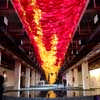
photo : Benjamin Ball
SZHK Biennale Installation 2009 Bug Dome by WEAK!
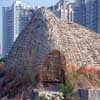
photo © Marco Casagrande
Shenzhen Architecture Biennale 2013
SZHK Biennale / information received Nov 2010
Location: Shenzhen, Eastern Asia
Shenzhen Architecture Designs
Shenzhen Architectural Designs
Universiade in Shenzhen
von Gerkan, Marg and Partners (gmp)
Universiade in Shenzhen
Hong Kong Architecture Designs – chronological list
Hong Kong Architecture – Selection
West Kowloon Development
Foster + Partners
West Kowloon Cultural Complex
International Finance Centre, Central
Cesar Pelli & Associates Architects, Rocco Design, Hirsch Bedner Associates
IFC 2 skyscraper
Innovation Tower, The Hong Kong Polytechnic University – PolyU
Zaha Hadid Architects
Hong Kong University Building
Comments / photos for the Shenzhen Hong Kong Biennale – SZHK Biennale Architecture page welcome

